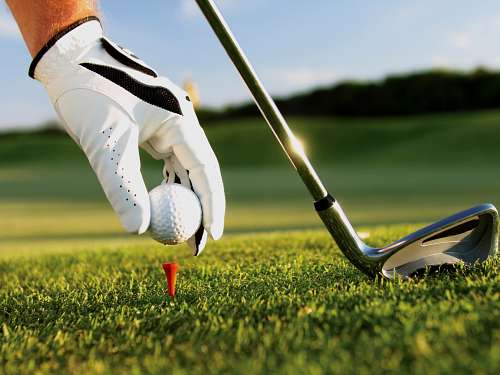Golf Specific Conditioning
Post details
Posted on 20th November 2014
How to take your game to a new level, avoid injury and improve fitness levels

The recent coverage of the Ryder cup illustrated the continued popularity of the game of golf. Over the years, golf has witnessed several noteworthy developments in terms of cutting edge technology, but lately there's been an important acknowledgement of the fitness levels required to play good golf. Being fit for golf allows for a more consistent, improved level of performance.
With improved postural alignment and increased core strength you can expect to increase power output, club head speed and thus drive distance whilst also avoiding the common injuries that can keep you off the course for prolonged periods. More muscular endurance allows you to maintain better concentration for a full 18 holes, and with better flexibility and balance, stroke mechanics are improved giving you more consistency and accuracy.
A 'bad round' is normally a result of inconsistency, an inability to maintain mental focus for the full 3-4 hours spent on the course and also a lack of physical fitness. Golf is actually a highly athletic event. There are significant forces placed upon the joints and particularly the spine which frequently result in spinal injuries or repetitive strain injuries. Recently, professionals and amateurs alike have chosen to address this by developing their golf specific fitness in order to prepare themselves for the demands of the game. Golfers like Tiger Woods and Rory McIlroy have followed such exercise programmes with significant success.
"Amateur golfers achieve approximately 90% of their peak muscle activity when driving a golf ball. This is the same lifting intensity as picking up a weight that can only be lifted four times, on average, before total fatigue. Yet golfers fail to consider that they strike the ball an average of 30-40 times each round with comparable intensity !" Paul Chek, Golf Biomechanics Manual 2009
These levels of intensity and muscle activation are similar to those in sports like football, tennis and martial arts. Yet these sports often include physical conditioning to meet such demands whereas golfers tend to start playing at an age where they no longer exercise or train in such a way.
So what is golf fitness ?
Flexibility, Mobility & Posture
Tight muscles shorten the range of motion of certain joints causing other joints to become hyper-mobile. This leads to an altered alignment of the musculoskeletal system or poor posture and because the forces involved can be so high, inevitably injury. We commonly refer to this as muscle imbalance, where a muscle group on one side of the body is short and tight when compared to the antagonist muscle group on the other side of the body which is often consequently long and weak. By first identifying which muscles are short and tight and then by stretching these specific muscle groups we can begin to restore balance to joints, the spine and the entire musculoskeletal system.

Joint Stability, Core Stability & Balance (controlling your centre of gravity)
Once we have started to loosen the tighter muscles we can look to restore the balance/stability of our joints by strengthening the longer, weaker muscles. The modern golf swing is about rotation of the spine. However, possibly as a result of the majority of people nowadays earning a living by working at a desk, hunched over a screen or laptop, the majority of amateur golfers have far from optimal spinal alignment and core stability. Therefore golfers commonly experience some form of back injury or overuse injury of the hips or shoulders. This is due to over-compensatory recruitment of muscles surrounding these joints which commonly result and manifest themselves in knee or elbow pain. Sound familiar ?
Endurance, Strength & Power
Only once optimal spinal alignment, posture, core stability, muscle balance and range of motion is restored can we look to improve performance via a personalised exercise programme which should steadily progress from muscle endurance, to strength and then finally power output. The exercises selected must retain a specificity toward producing an optimal golf swing in terms of posture, stability, balance and spinal rotation. There are too many programme design factors to list here but it should be stated that your exercise programme must be specific to you, focusing on your weaknesses and your postural issues.
Bodyguards Fitness Service Ltd
Golf Specific Conditioning Packages
At Bodyguards, we offer Personalised Golf Conditioning programmes designed specifically for you. They involve a detailed assessment of your posture, your flexibility and ranges of motion, your muscle strength and most importantly your core stability. Once this information has been collected we'll write you a custom made correctional exercise programme including a bespoke stretching plan to restore your posture and musculoskeletal balance and then via one to one personal training sessions we'll guide you through a carefully designed exercise programme, periodically progressed to develop your fitness from stability/endurance to strength and then finally power generation.
Duncan Edwards, Director, Health Coach & Exercise Specialist,
The golf package would make an ideal Christmas gift for a friend or family member. For more information about or to purchase one of our Golf Specific Conditioning Packages please contact us...
info@bodyguardsapt.com 0191 239 9000
Back to blog listingBook your session now
Call us or send us a message to book a session at BodyGuards.
Book nowMore blog posts
-
Single Leg Glute Bridge
Posted on 4th October 2020
Benefits of the single leg glute bridge
-
Plank Plate Presses
Posted on 2nd October 2020
Combine core activation and shoulder stabilisation in one movement
-
Elevated Heels for the Romanian Deadlift
Posted on 30th September 2020
Elevating your heels will alter the emphasis on key muscles when performing this exercise
